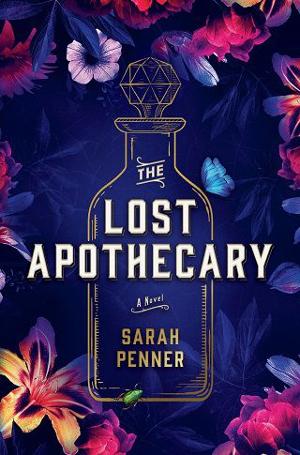Nella Clavinger’s Apothecary Of Poisons
Nella Clavinger’s Apothecary of Poisons
Excerpt from dissertation submitted by Caroline Parcewell,
MPhil candidate in eighteenth century and Romantic studies,
University of Cambridge
Annotations & assorted remedies as recovered
from the journals at Bear Alley
Farringdon, London EC4A 4HH, UK
HEMLOCK JULEP
For a gentleman of exceptional intelligence and command of language.
These qualities will remain until the very end, which may be useful
when needing to extract a confession or account of events.
Fatal dosage: six large leaves, though an especially large male may require eight. Initial symptoms are vertigo and the sensation of being very cold. Recommended preparation is a decoction or julep, similar to thorn apple. Extract juice from fresh leaves, crushed and drained.
ORPIMENT (YELLOW) ARSENIC
Because this remedy takes on the consistency of flour or fine sugar,
it is suited for the especially gluttonous gentleman, one who
may enjoy a sweet lemon or banana pudding.
A most curious mineral. Note: highly soluble in hot water. Fumes smell like garlic; hence, do not serve warm. Used to kill household varmints of many kinds, human or animal. Lethal dose is three grains.
CANTHARIDES BLISTER BEETLE
When arousal before incapacitation is desired,
such as at the brothel or in the bedchamber.
These insects may be found in low-lying fields in cool weather, near root crops; best harvested under a new or young moon. So as not to confuse with harmless beetles similar in appearance, crush a single male (will excrete milk-like fluid) to test for burn upon skin before full harvest. To prepare, roast then grind in wide basin until thin. Dispense in dark, thick liquid—wine, honey, syrup.
BLACK BUTTERCUP, HELLEBORE
For the gentleman prone to spells of madness or hallucination, possibly due
to overconsumption of drink or laudanum drops. He will believe hellebore
poisoning symptoms are the result of his own demons.
Seeds, sap, roots—all poisonous. Look for black blooms and roots, which prevent mix-up with other species in the buttercup family. Initial symptoms are dizziness, stupor, thirst and sensation of suffocation.
WOLFSBANE, OR MONK’S HOOD
For the most devout, who may feign the wrath of God in their final moments by
way of physical outburst. Wolfsbane acts upon the nerves of the limbs, calming
them; such theatrical reactions will be impossible.
Cultivation notes: flowering plant is very easy to grow, soil must be well drained. Harvest when root is half-inch thick at base of plant. Handle with gloves. Dry the plucked root for three days. Shred root fibers with two sharp knives; dispense in mustard root sauce such as horseradish. Excellent when supper courses are to be served individually (avoid buffets).
NUX VOMICA, POISON NUT
The most reliable of remedies, as quick-acting as it is irreversible. Suitable for
administration to all men, regardless of age, proportion or intellect.
For extraction of agent, grind finely the brown bean, also known as crow fig. In very low doses, may be used to treat fever, plague, hysteria. Be warned, very bitter! Produces a yellowish color when stewed. Victim will experience severe thirst as first symptom. Egg yolk is preferred preparation.
DEVIL’S SNARE, OR THORN APPLE
Due to immediate delirium, even the cleverest conspirator will be caught
unaware. Ideal for attorneys and estate executors.
Note: egg-shaped seeds are not rendered benign by drying or heating. Thorn apple produces greater delirium than other nightshades. Animals, wiser than men, will avoid the weed due to its taste and disagreeable odor. Find the plant in undisturbed areas.
GRAVEYARD YEW
Yew trees are said to lust after corpses; an ideal remedy to speed along death in an
already-ailing or older gentleman.
Poison agent resides in seeds, needles and bark (needles least preferred, very fibrous). Often found in medieval village graveyards—trees upward of 400 to 600 years old. Seek younger trees for most desirous seeds. Preparation: bark bolus or suppository. Caution against dispensing to undertakers or cemetery groundsmen; familiar with the odor of the evergreens, they may thwart an attempt at administration.
PHALLUS FUNGUS
Death may be delayed five days or more. Best administered when a will or final
testament must be amended in the presence of a witness or family member who
needs time to arrive at the victim’s sickbed.
The deadliest mushroom, appearing at the base of certain trees in the second half of the year. Cooking does not render the fungus benign. A reliable toxin, though very difficult to obtain. An evasive remedy, as victim will believe he is nearing recovery. This indicates imminent death.
 Fullepub
Fullepub 



